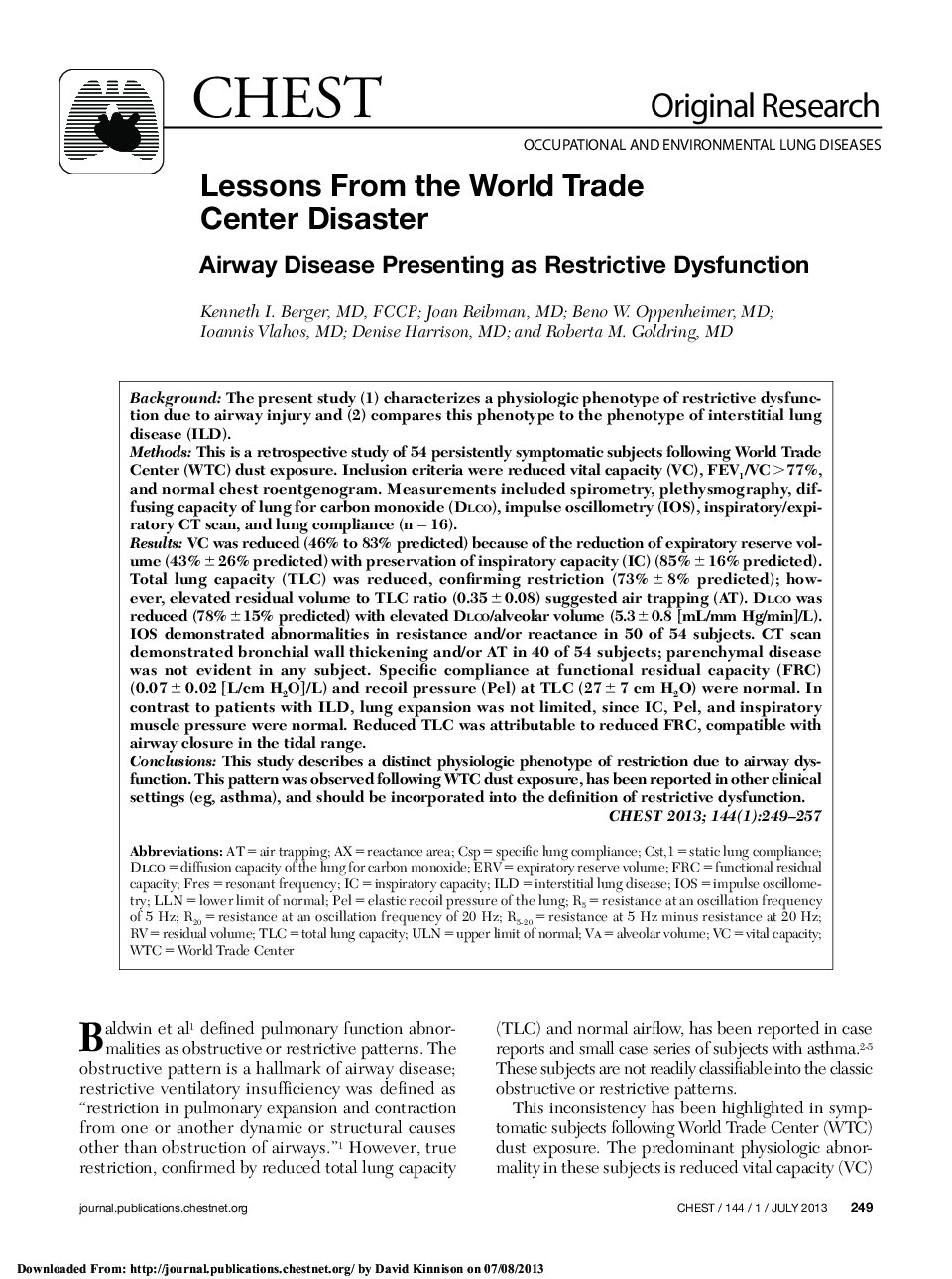| Article ID | Journal | Published Year | Pages | File Type |
|---|---|---|---|---|
| 5955755 | Chest | 2013 | 9 Pages |
BackgroundThe present study (1) characterizes a physiologic phenotype of restrictive dysfunction due to airway injury and (2) compares this phenotype to the phenotype of interstitial lung disease (ILD).MethodsThis is a retrospective study of 54 persistently symptomatic subjects following World Trade Center (WTC) dust exposure. Inclusion criteria were reduced vital capacity (VC), FEV1/VC > 77%, and normal chest roentgenogram. Measurements included spirometry, plethysmography, diffusing capacity of lung for carbon monoxide (Dlco), impulse oscillometry (IOS), inspiratory/expiratory CT scan, and lung compliance (n = 16).ResultsVC was reduced (46% to 83% predicted) because of the reduction of expiratory reserve volume (43% ± 26% predicted) with preservation of inspiratory capacity (IC) (85% ± 16% predicted). Total lung capacity (TLC) was reduced, confirming restriction (73% ± 8% predicted); however, elevated residual volume to TLC ratio (0.35 ± 0.08) suggested air trapping (AT). Dlco was reduced (78% ± 15% predicted) with elevated Dlco/alveolar volume (5.3 ± 0.8 [mL/mm Hg/min]/L). IOS demonstrated abnormalities in resistance and/or reactance in 50 of 54 subjects. CT scan demonstrated bronchial wall thickening and/or AT in 40 of 54 subjects; parenchymal disease was not evident in any subject. Specific compliance at functional residual capacity (FRC) (0.07 ± 0.02 [L/cm H2O]/L) and recoil pressure (Pel) at TLC (27 ± 7 cm H2O) were normal. In contrast to patients with ILD, lung expansion was not limited, since IC, Pel, and inspiratory muscle pressure were normal. Reduced TLC was attributable to reduced FRC, compatible with airway closure in the tidal range.ConclusionsThis study describes a distinct physiologic phenotype of restriction due to airway dysfunction. This pattern was observed following WTC dust exposure, has been reported in other clinical settings (eg, asthma), and should be incorporated into the definition of restrictive dysfunction.
